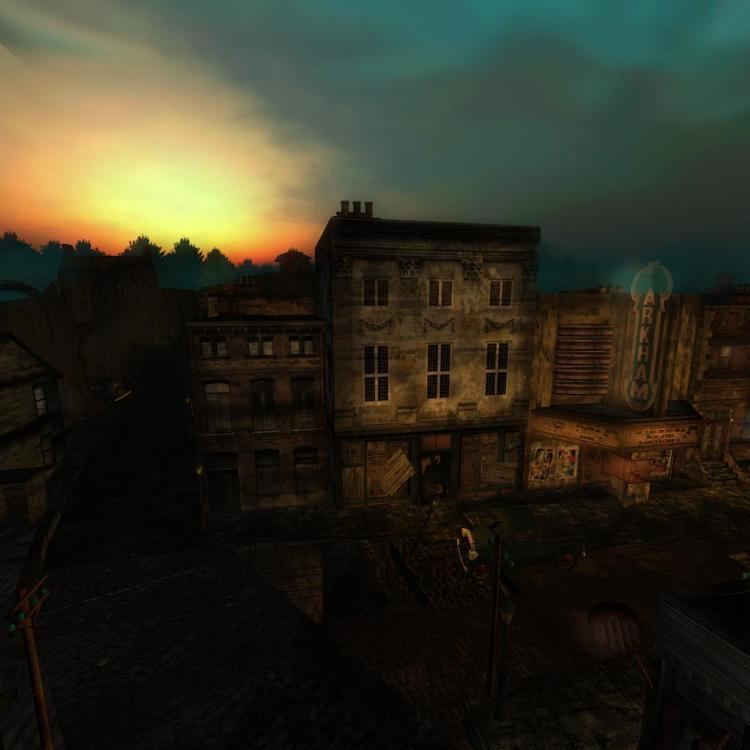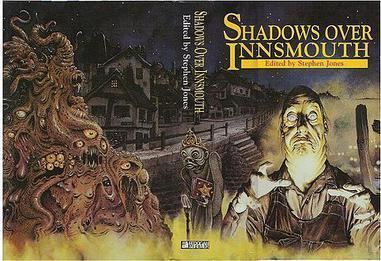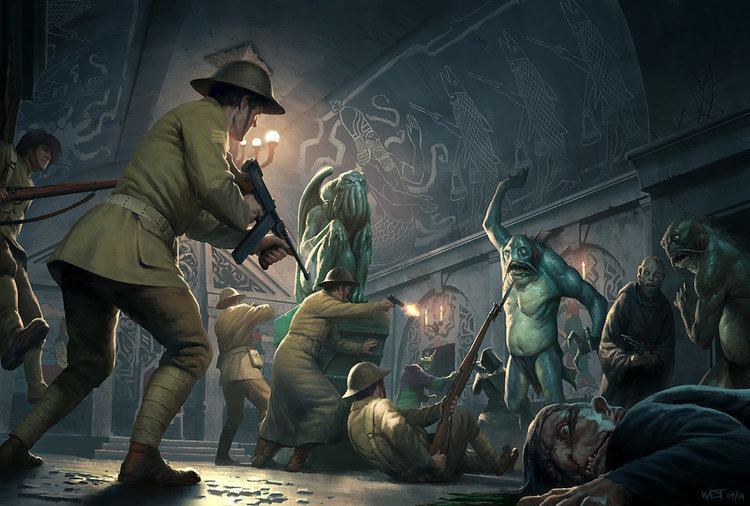 | ||
Isu wind symphony roy magnuson innsmouth massachusetts 1927
Innsmouth, Massachusetts (/ˈɪnzməθ/) is a fictional town created by American author H. P. Lovecraft as a setting for one of his horror stories, and referenced subsequently in some of his other works and by other authors who wrote stories taking place in the world Lovecraft created with his stories.
Contents
- Isu wind symphony roy magnuson innsmouth massachusetts 1927
- Fireside lovecraft the shadow over innsmouth part 1 of 5 asmr reading
- Location
- Description
- History
- Esoteric Order of Dagon
- Other appearances
- Games
- Music
- Fiction including graphic novels
- Film
- Television
- Manuxet River
- References

Lovecraft first used the name "Innsmouth" in his 1920 short story "Celephaïs" (1920), where it refers to a fictional village in England. Lovecraft's more famous Innsmouth, however, is found in his story "The Shadow Over Innsmouth" (1936), set in Massachusetts. This latter Innsmouth was first identified in two of his cycle of sonnets Fungi from Yuggoth. Lovecraft called Innsmouth "a considerably twisted version of Newburyport", Massachusetts.

Fireside lovecraft the shadow over innsmouth part 1 of 5 asmr reading
Location

Lovecraft placed Innsmouth on the coast of Essex County, Massachusetts, south of Plum Island and north of Cape Ann. The town of Ipswich, Massachusetts is said to be a near neighbor, where many Innsmouth residents do their shopping; Rowley, Massachusetts, another neighboring town, is said to be to the northwest. This would place Innsmouth in the vicinity of Essex Bay.
Description

The town of Innsmouth is described as being in a horrendous state of decay, with many of the buildings rotting, and on the point of collapse. In "The Shadow Over Innsmouth," the protagonist describes his first sight of the place:
It was a town of wide extent and dense construction, yet one with a portentous dearth of visible life. From the tangle of chimney-pots scarcely a wisp of smoke came, and the three tall steeples loomed stark and unpainted against the seaward horizon. One of them was crumbling down at the top, and in that and another there were only black gaping holes where clock-dials should have been. The vast huddle of sagging gambrel roofs and peaked gables conveyed with offensive clearness the idea of wormy decay, and as we approached along the now descending road I could see that many roofs had wholly caved in. There were some large square Georgian houses, too, with hipped roofs, cupolas, and railed "widow's walks". These were mostly well back from the water, and one or two seemed to be in moderately sound condition....
The decay was worst close to the waterfront, though in its very midst I could spy the white belfry of a fairly well-preserved brick structure which looked like a small factory. The harbour, long clogged with sand, was enclosed by an ancient stone breakwater....
Here and there the ruins of wharves jutted out from the shore to end in indeterminate rottenness, those farthest south seeming the most decayed. And far out to sea, despite a high tide, I glimpsed a long, black line scarcely rising above the water yet carrying a suggestion of odd latent malignancy. This, I knew, must be Devil Reef.
History
Lovecraft writes that Innsmouth was "founded in 1643, noted for shipbuilding before the Revolution, a seat of great marine prosperity in the early nineteenth century, and later a minor factory center." The loss of sailors, due to shipwrecks, and the War of 1812 caused the town's profitable trade with the South Seas to falter; by 1828, the only fleet still running that route was that of Captain Obed Marsh, the head of one of the town's leading families.
In 1840, Marsh started a cult in Innsmouth known as the Esoteric Order of Dagon, basing it on a religion practiced by certain Polynesian islanders, which he had met during his travels. Shortly thereafter, the town's fishing industry experienced a great upsurge.
Records indicate that in 1846, a mysterious plague struck the town, causing mass depopulation. In reality, the deaths were caused by the Deep Ones themselves. Obed Marsh had entered into a contract with the aforementioned creatures, offering them sacrifices in exchange for plentiful gold and fish. When Obed and his followers were arrested, the sacrificial rites ceased and the Deep Ones retaliated. The cult activity subsequently resumed, and the interbreeding policy greatly increased, resulting in numerous deformities. Consequently, Innsmouth was shunned for many years, until 1927 when it came under investigation by Federal authorities for alleged bootlegging.
The following year, and apparently due to the results of their research, these authorities decided to detonate explosives in Devil Reef, near Innsmouth, and to arrest most of the locals. The Innsmouthians were not taken to a common jail, but instead they disappeared mysteriously (or the government caused them to "disappear").
Esoteric Order of Dagon
The Esoteric Order of Dagon was the primary religion in Innsmouth after Marsh returned from the South Seas with the dark religion circa 1838. It quickly took root due to its promises of expensive gold artifacts and fish, which were desired by the primarily-fishing town.
The central beings worshipped by the Order were the Father Dagon and Mother Hydra, and, to a lesser extent, Cthulhu. Dagon and Hydra were seen largely as intermediaries between the various gods, rather than as gods themselves. Even so, the cultists sacrificed various locals to the Deep Ones at specific times in exchange for a limitless supply of gold and fish.
The Esoteric Order of Dagon (which masqueraded as the local Masonic movement) had three oaths which members had to take. The first was an oath of secrecy, the second, an oath of loyalty, and the third, an oath to marry a Deep One and bear or sire its child. Due to the latter oath, interbreeding became the norm in Innsmouth, resulting in widespread deformities and many half-breeds.
The Esoteric Order of Dagon was seemingly destroyed when one of Obed Marsh's "lost descendants" sent the U.S. Treasury Department to seize the town. As a result, the town was more or less destroyed, and the Order was thought disbanded.
Other appearances
All subsequent references to or usages of Innsmouth and its fictional surroundings appear to be found in postmodern popular culture:
Games
Music
Fiction (including graphic novels)
Film
Television
Manuxet River
The Manuxet River is a fictional river that runs through Massachusetts and empties into the sea at the town of Innsmouth. Although there is a Manuxet River in Worcester, Massachusetts, Will Murray believes that Lovecraft based his fictional Manuxet on the Merrimack River and probably invented the name from root words of an Algonquian language.
To support his claim, Murray gives two reasons. First, even though Newburyport was the inspiration for Innsmouth, it is clearly a separate location since Lovecraft himself placed the real-life Newburyport to the north of Innsmouth in "The Shadow Over Innsmouth". Based on his research, Murray thinks that Lovecraft actually based Innsmouth on Gloucester, Massachusetts, which is located on Cape Ann on the coast. Secondly, Lovecraft is known to have come up with the name for his fictional Miskatonic River by combining Algonquian root words. Murray believes that Lovecraft used a similar method to come up with Manuxet. In Algonquian, man means "island" and uxet translates to "at the large part of the river"; thus, when combined Manuxet means "Island at the large part of the river". Murray contends that this meaning is well suited to Innsmouth's placement at the mouth of the Manuxet. And Cape Ann itself (the alleged site of Innsmouth) is connected to the mainland by only a thin strip of land and might be thought of as an island.
As stated earlier, the town was taken by the U.S. Treasury Department. During the assault, the Manuxet allowed the personnel to cross during February and take the town when it froze over.
